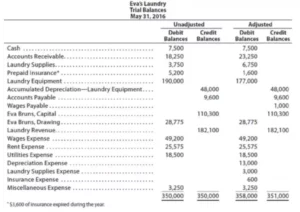Content

We’re firm believers in the Golden Rule, which is why editorial opinions are ours alone and have not been previously reviewed, approved, or endorsed by included advertisers. Editorial content from The Ascent is separate from The Motley Fool editorial content and is created by a different analyst team. For example, Jim’s hardware store control account invoiced two customers for a total of $700. He also received a payment in the amount of $275 from a previous invoice. My Accounting Course is a world-class educational resource developed by experts to simplify accounting, finance, & investment analysis topics, so students and professionals can learn and propel their careers.
- As the business expands the accounting requirements increase which may lead to more errors occurring which are very difficult to find.
- This control account is then reflected in the general ledger and financial statements as a single accounts receivable balance.
- Each Control Account is defined with a unique code or an accounting number which can be used to link to the performing account system.
- The information on this site cannot be relied on as accurate and up to date.
- Used with subsidiary accounts, your control balance should always be equal to the balance in the control account.
Rather than leave them all lumped together under the built-in control account, Cash at bank, it decides to break them apart for better management visibility. It creates two new custom control accounts, Payroll accounts and Term deposits. Northwind leaves its various demand deposit accounts in the original, renamed control account. It assigns the accounts at local branch banks used to pay employees in various cities to Payroll accounts.
How To Prepare A Control Account? Example and Format
The information on this site cannot be relied on as accurate and up to date. We strongly advise you seek the advice of accounting and tax professionals before making any accounting related decisions. About the Author – Dr Geoffrey Mbuva(PhD-Finance) is a lecturer of Finance and Accountancy at Kenyatta University, Kenya. He is an enthusiast of teaching and making accounting & research tutorials for his readers.

However, an administrator can create new tax https://www.bookstime.com/articles/liability-accountss if necessary. A debtors control account utilizes the principle of double-entry because both the debit and credit transactions are recorded. Sums paid by debtors and the sum of credits realized within the business are recorded. A common example of a control account is the general ledger account entitled Accounts Receivable. With the double-entry accounting system, accounts receivable, and accounts payable are the common types of control accounts.
Company
Large organizations typically use control accounts since their high transaction volume demands an organized and efficient way of managing their records. On the contrary, small organizations can usually manage to store all of their transactions in the general ledger and, therefore, do not require a subsidiary ledger linked to a control account. In NetSuite, the tax control accounts are either already set up by default, or set up for you by Professional Services.
What is a control account?
Definition of a Control Account
Control accounts are meant to keep a company's general ledger clean of details. They still need to have the correct financial information needed to prepare the company's financial statements. Control accounts are clean entries that match overall amounts in more detailed ledgers.
For example, a sales ledgerSales LedgerA sales ledger is a ledger entry that records any sale in the book of records, even if the payment is received or not yet received. It records the sales and the cash when received and the amount owed to the business.read more & debtor ledger control account summarizes the transactions entered with the individual accounts in the ledger. Any discrepancy or error is rectified before posting the same in the main ledger. The definition of a control account is a general ledger account that summarizes (or controls) a subsidiary ledger group of detail accounts. The benefit of not posting all of the detail entries to these accounts is that it keeps the general ledger from becoming too cluttered to manage.
Feasibility Study and Its Importance in Project Management
Individual transactions appear in both accounts, but only as an ending balance in the control account. More details such as where the money came from, who it came from and the date it was paid appear in the subsidiary ledger. The details of a control account will be found in a corresponding subsidiary ledger. The control account keeps the general ledger clean of details, but contains the correct balances used for preparing a company’s financial statements. If you’re still using manual ledgers to record accounting transactions, the best thing you can do is make the switch to accounting software, which includes complete control account management. The purchase ledger control account is a debit account, which means that it increases when there is a purchase made, and decreases when a payment is made to a supplier.
For example, all payables entered during one day will be aggregated from the subsidiary ledger and posted as a single summary-level number into the accounts payable control account. The purchase ledger control account, or trade creditor control account, is part of the balance sheet and shows at any given time how much you owe to your suppliers. All of the individual transactions posted to your supplier ledger are included in this account, so any invoices, credit notes and payments are recorded. For example, accounts receivable records every transaction, including customer information, sale particulars, returns, refunds, and payments in its sub-ledger. The sub-ledger is calculated for totals at each reporting period and makes up the accounts receivable control account balance. Therefore, the accounts receivable control account represents the total amount owed to the company, while the sub-ledger displays the amount each customer owes.
